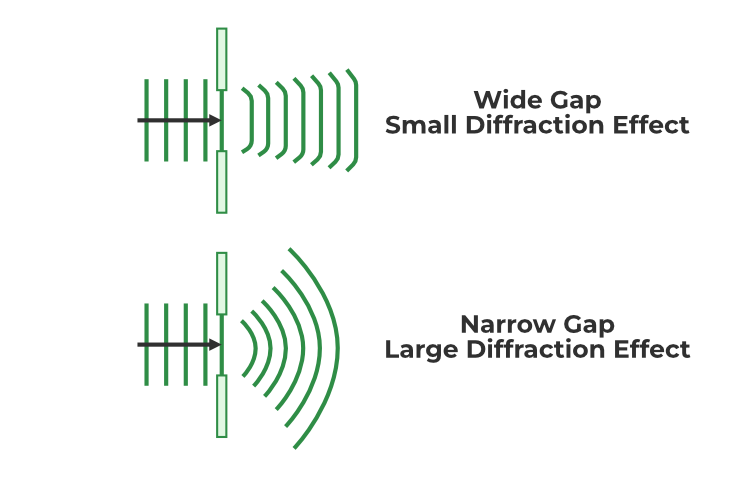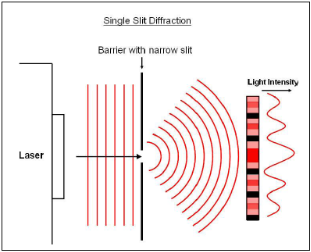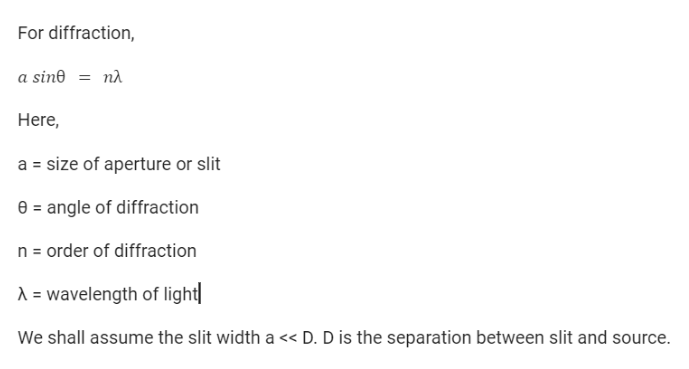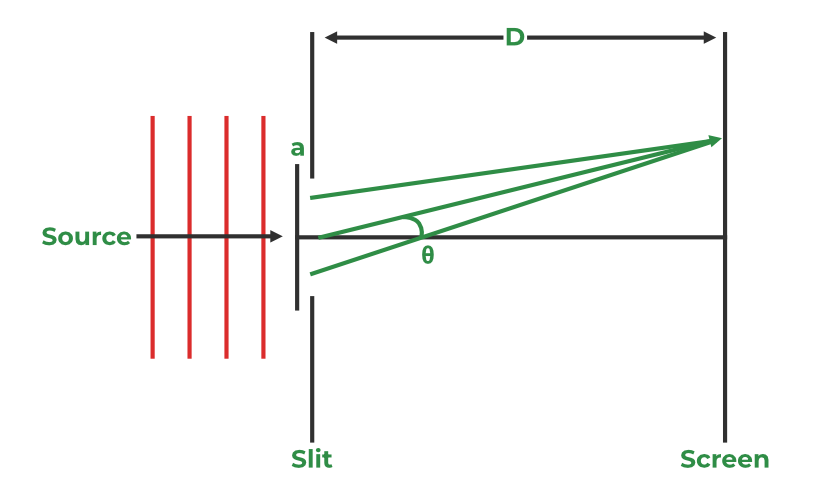39 Insightful Publications
The experiment “Diffraction of Light Due to a Thin Slit” aims to study the diffraction of light. The objective of this experiment is to observe diffraction, i.e. the bending of light around the corners through a thin slit.
First, let’s define Diffraction,
Diffraction is a phenomenon of bending of light around the corners or edges of a fine opening or aperture. Diffraction occurs when the width of the slit or aperture is less than or comparable with the wavelength of the wave. Due to this phenomenon, light spreads out and illuminates areas where a shadow is expected. It is generally hard to separate diffraction from interference since both occur simultaneously.

Light diffracts due to its wave nature, the diffraction pattern arises due to interference of light waves from different symmetrical points of the same wavefront. Due to a single slit, the diffraction pattern consists of a central bright band with alternating dark and bright bands of decreasing intensity on both sides.
In the single-slit diffraction experiment, we can observe the bending phenomenon of light or diffraction that causes light from a coherent source to interfere with itself and produce a distinctive pattern on the screen called the diffraction pattern.



FAQs on Diffraction of Light Due to a Thin Slit
What is the phase difference?
Answer: The phase difference is defined as the difference between any two waves or particles having the same frequency and starting from the same point. It is expressed in degrees or radians.
What is fringe width?
Answer: Fringe width is defined as the distance between any two consecutive bright or dark fringes.
Can sound waves get diffracted?
Answer: Diffraction is the bending of waves around a corner. Sound waves can also be diffracted. The fact that we can hear sounds around corners and around barriers is due to the diffraction of sound as well as its reflection.
What do you understand by the term monochromatic light?
Answer: Light containing rays of a single wavelength is called monochromatic light.
What are coherent sources of light?
Answer: Coherent sources of light are those sources which emit a light wave having the same frequency, wavelength and in the same phase, or they have a constant phase difference.




























